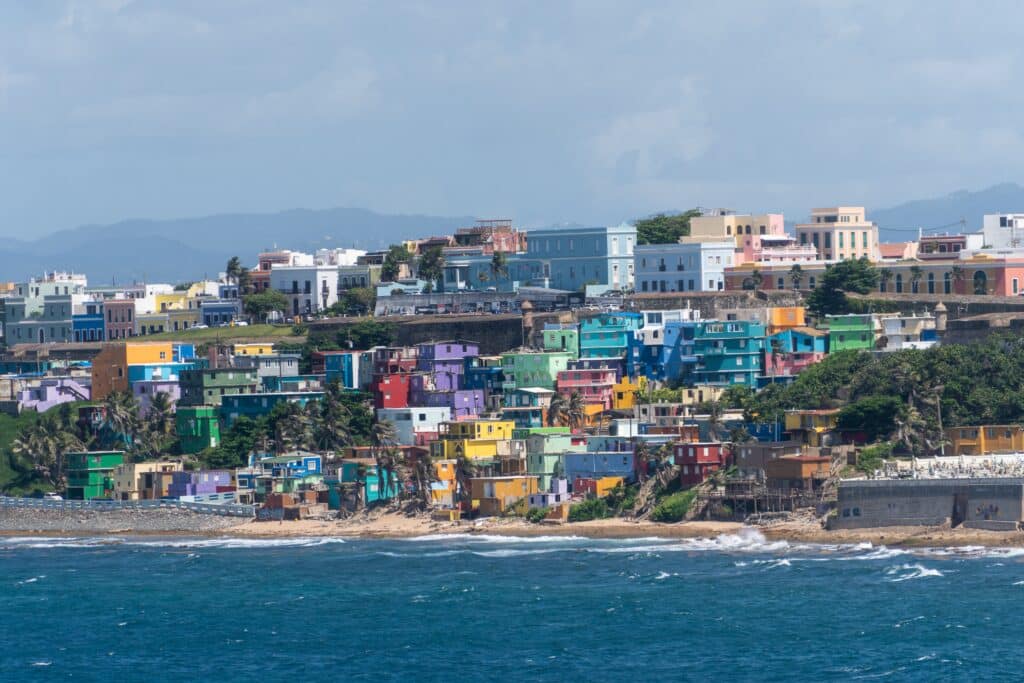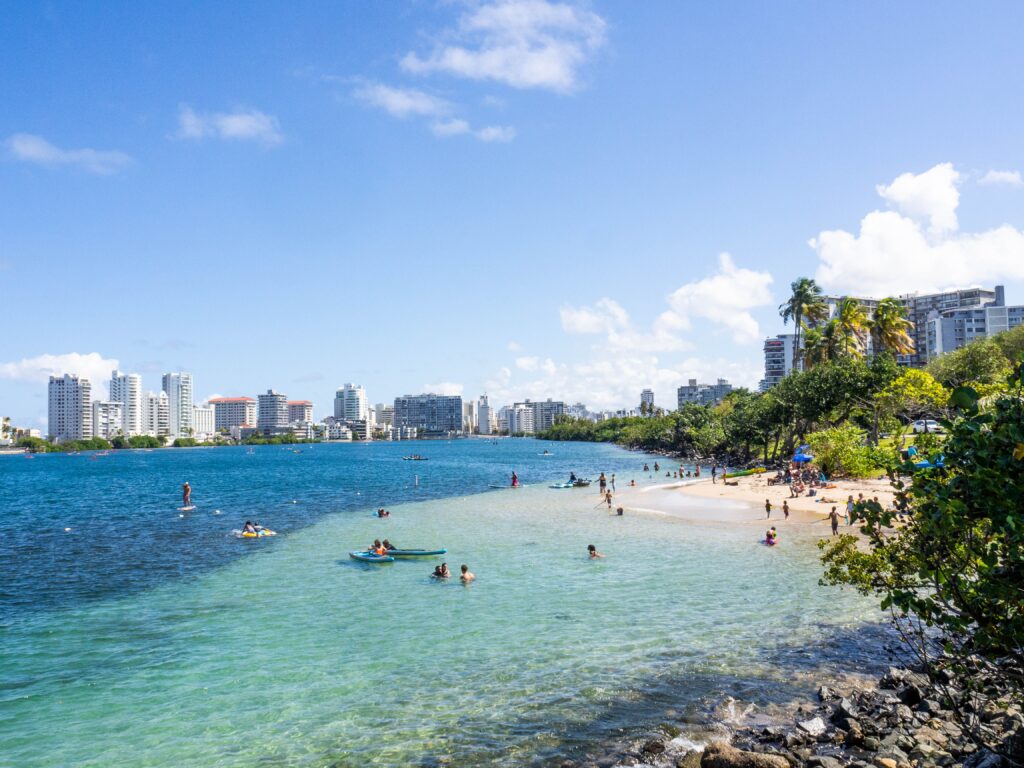
Puerto Rico is a territory of the United States in the northeastern Caribbean. Its warm weather and beautiful beaches draw tourists from around the world.
If you’re planning a trip to the popular island destination, you may wonder what currency Puerto Rico uses and how you can obtain Puerto Rican money once you arrive. To answer your questions, our team here at Remitly created this guide to Puerto Rican currency.
What is the currency in Puerto Rico?
Because of the island’s territory status, Puerto Rico has no unique currency. The official currency is the U.S. dollar, the same monetary system used throughout all 50 states of the U.S.
The Federal Reserve Board or Fed is responsible for overseeing the U.S. dollar. The U.S. Bureau of Printing and Engraving produces banknotes in Puerto Rico, while the U.S. Mint manufactures the coins.
On monetary exchanges, the currency code for the U.S. dollar is USD. The currency symbol for dollars is $, placed immediately before a value, such as $5 for five dollars.
Banknote denominations in circulation currently include:
- $1: Shows George Washington, the first U.S. President, on the front and the Great Seal of the United States on the back
- $2: Displays Thomas Jefferson, the third U.S. President, on the front and a detail of the painting The Signing of the Declaration of Independence by John Trumbull on the back. The $2 bill is not commonly used, but you may sometimes see it.
- $5: Abraham Lincoln, the 16th U.S. President, appears on the front, and the memorial built in his honor in Washington, D.C., is on the back
- $10: Displays a portrait of Alexander Hamilton, one of the founding fathers of the U.S., on the front and the U.S. Treasury Building on the back
- $20: Features a portrait of Andrew Jackson, the seventh U.S. president, on the front and an image of the U.S. presidential home, the White House, on the back
- $50: Has a portrait of Ulysses S. Grant, the 18th U.S. president, on the front and the U.S. Capital on the back
- $100: Benjamin Franklin, one of the U.S. founding fathers, is on the front, and on the back is an image of Independence Hall, the location of the signing of the Declaration of Independence
All U.S. banknotes are green in color and printed on paper.
The cent is the subunit of the dollar, and there are 100 cents in a U.S. dollar. To represent cents as a standalone value, use the ¢ symbol, placing it after the number. For example, 25¢ is 25 cents.
Coins currently in circulation in the U.S. include the following:
- 1¢ or penny: A copper-plated zinc coin with plain edges that has Abraham Lincoln on the front and a Union Shield on the back
- 5¢ or nickel: A nickel alloy coin with plain edges that has Thomas Jefferson on the front and an image of his home, Monticello, on the back
- 10¢ or dime: A nickel alloy coin with a reeded edge that shows 32nd U.S. President Franklin Delano Roosevelt on the front and a torch with an olive branch on the back
- 25¢ or quarter: A nickel alloy coin with a reeded edge that displays George Washington on the front and a variety of images on the back paying tribute to famous American women
The U.S. Mint also produces half-dollar and dollar coins, but people rarely pay for things with them.
A brief history of Puerto Rican currency

In 1493, Christopher Columbus discovered Puerto Rico, claiming the island for Spain. The island was under Spanish rule during the centuries that followed, but people used coins from many countries to buy and sell goods.
During the 17th century, Spain introduced the provincial currency to Puerto Rico. Its primary unit was the peso divided into 100 centavos.
In 1898, the U.S. took control of Puerto Rico as a part of the treaty negotiated at the end of the Spanish-American War. One year later, the U.S. introduced the dollar as the currency of Puerto Rico.
More than a century later, in 2009, the U.S. Mint produced a commemorative quarter in honor of Puerto Rico. George Washington appears on the front of the coin, and on the back is an image of a sentry box and a hibiscus flower alongside the words “Isla del Encanto,” a nickname for Puerto Rico.
Exchange rates and conversion
The Puerto Rican dollar and the U.S. dollar are the same currency, so there is no need to convert money from one to the other. Like USD exchange rates, Puerto Rico exchange rates for other forms of currency vary depending on economic factors.
5 tips for using currency in Puerto Rico
If you’re planning a trip to Puerto Rico, keep the following tips on how to get local currency and use it during your stay.
1. Plan to exchange your currency for the Puerto Rico dollar in a major city
You can exchange many currencies for USD if you’re from outside the U.S. However, money exchange services are mainly located at the airport and in San Juan and Ponce. Tourists headed to other areas may have difficulty exchanging currency in their destinations, so plan to obtain USD when you arrive.
Some resorts located outside main cities will exchange major currencies for U.S. dollars. It’s a good idea to double-check if your hotel offers this service before you arrive.
2. ATMs can provide quick access to cash
ATMs in Puerto Rico are typically part of the Cirrus or PLUS systems, both used worldwide. As a result, you’ll likely be able to withdraw U.S. dollars from ATMs while on the island. Many ATMs also allow you to make cash advances using Visa and MasterCard credit cards.
When choosing an ATM, look for one in a public area. If it’s nighttime, select a well-lit location for safety.
Keep in mind that financial institutions may charge fees for international ATM withdrawals. You may also be assessed a currency conversion fee.
3. Credit and debit cards can simplify purchases
Hotels throughout the island and many businesses in Ponce and San Juan accept credit and debit cards that are part of the Visa or MasterCard networks. Still, having some U.S. dollar banknotes on hand is a good idea.
When you use an international debit or credit card to pay for things in Puerto Rico, you’ll likely be charged a currency conversion fee. There may also be international usage fees assessed.
If you plan to use your debit or credit card while traveling in Puerto Rico, notify your credit card company or bank of your travel plans ahead of time. Doing so reduces the risk of your card being declined due to fraud concerns.

4. Shop around for the best exchange rates
Exchange rates and fees for changing currency to U.S. dollars vary. Compare the rates and fees of multiple services whenever possible to get the best deal. Check out our article on how to get the best exchange rates when sending money internationally for more information on researching rates.
5. Locals still use old names for money
Although Puerto Rico uses the same currency as the U.S., Puerto Ricans have their own nicknames for some money. They are:
- Dollar: Peso
- Penny: Centavo or chavito
- Nickel: Ficha or vellón
- Quarter: Pesita
These names can be traced back to the ones used for Spanish money.
Sending money to Puerto Rico
If you’re from outside the U.S. or its territories and need to send money to Puerto Rico, Remitly can help.
